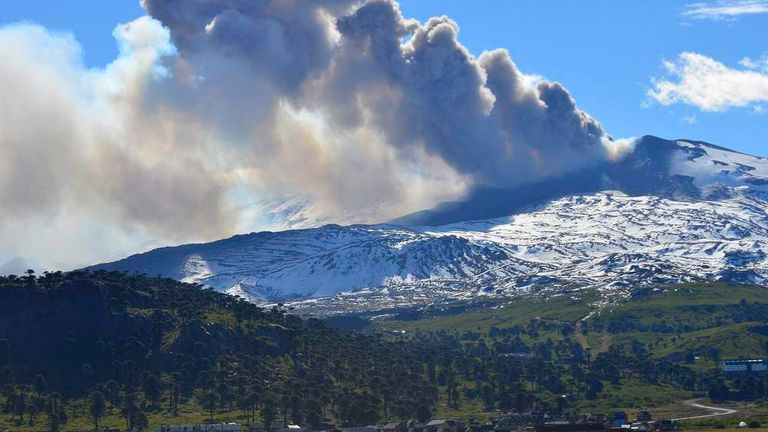Chile Volcano: Red Alert Issued For Copahue
About 3,000 people are expected to be evacuated amid fears increased activity at the Copahue volcano will lead to an eruption.
Monday 27 May 2013 18:23, UK
Chilean and Argentine officials have issued a red alert for the Copahue volcano bordering the two countries and ordered the evacuation of about 3,000 people.
The nearly 10,000ft (2,965m) volcano, which sits in the Andes cordillera, straddling Chile's border with Argentina's Neuquen province, has become increasingly active in recent times.
Chile's Interior and Security Minister Andres Chadwick said the increased activity could lead to an eruption and officials will begin evacuating about 2,240 people within a 15-mile (25km) radius soon.
"This evacuation is obligatory; it's not voluntary," Mr Chadwick said.
According to Chile's Emergency Office, the evacuation could last about 48 hours, but could be delayed because of heavy rains.
The volcano is located hundreds of kilometres from the country's capital Santiago in south-central Chile's Bio Bio region.
Argentine officials raised their alert level to red - after initially issuing a yellow alert - because of higher seismic activity and ordered the evacuation of about 600 people from the town of Caviahue to the neighbouring city of Loncopue.
The Neuquen Crisis Committee said: "The volcano is not erupting yet, but as a preventive measure we've decided to evacuate the population.
"There are no ashes in Caviahue. The vapour plume has descended, but in the last days, seismic activity has increased.
"That's the reason behind the change of alert in Argentina and Chile."
A red alert was last issued for the Copahue volcano in December, when a mile-high cloud of ash was seen billowing out of the crater.
The last major eruption occurred in 1991. Some 20 years later, in 2001, it became highly active with blasts and gases.
In mid-2011, ash from a volcano in Chile's Puyehue-Cordon Caulle chain that erupted after decades lying dormant forced the sporadic cancellation of hundreds of flights, especially in neighbouring Argentina and Uruguay.




